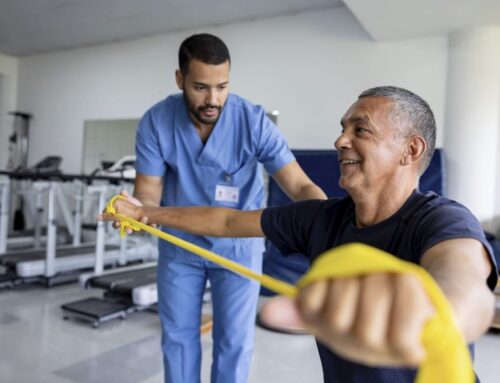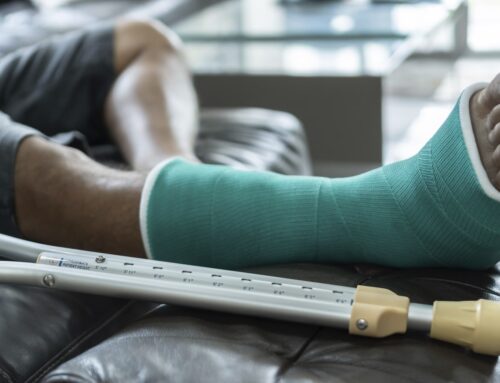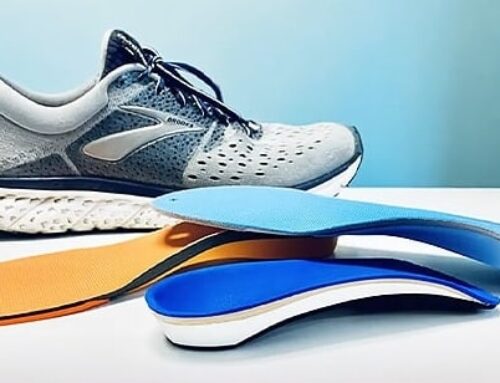One of the most commonly-asked orthopaedic questions is about using ice and heat for pain relief. When administered correctly, both therapies can be safe and effective ways to treat injuries. In this blog, we explore alternating ice and heat.
Our orthopaedic patients often ask when to use one instead of the other. Knowing the difference between ice and heat therapy is important. Using the wrong method could increase your pain.
When to use ice therapy for injuries
When you have a new or recent injury, use ice to reduce pain and swelling. Ice or cold therapy slows blood flow to the injured area, reducing inflammation and pain and improving circulation. Ice will also reduce the risk of tissue damage if used within 48 hours after suffering an injury. Furthermore, ice can act as a local anesthetic, numbing the area and slowing pain signals to the brain.
You can treat the following types of injuries with ice therapy:
- Strains
- Sprains
- Tendinitis
- Gout
- Injuries and arthritis less than six weeks old
The best way to use ice therapy to relieve pain is by applying a cold compress or ice pack to the painful area. Treat the area with cold therapy for 20 to 30 minutes every four to six hours for about three days. Never apply ice directly to the skin; always use a thin fabric or towel as a barrier.
Ice massage is a popular cold treatment to reduce pain and swelling. To create an ice massager, freeze water in a small paper cup. Remove the upper rim of the cup and hold the bottom with one hand. Rub or massage the exposed ice in circular motions directly onto the skin covering the injured area.
To avoid ice burn on the skin, continue massaging the area but never hold the ice in one place. You can try an ice massage twice a day or up to five times a day for five minutes at a time. Ice massage can be an effective way to soothe and reduce swelling in the affected area.
Another effective cold therapy method is a cold (not freezing) bath to treat pain. An ice bath can ease all-over body aches from a vigorous workout.
Our doctors recommend the RICE method when patients have suffered a soft tissue injury (muscle, tendon or ligament). RICE is an acronym used for:
- Rest: Rest the injured limb or area of the body
- Ice: Apply one or more of the ice therapy methods described above
- Compression: Wrap the injured area to help reduce swelling by limiting blood flow
- Elevation: Further reduce swelling by keeping the injured area raised above the heart
When to use heat therapy for injuries
Muscle and chronic pain respond well to heat therapy. Heat therapy works by dilating the blood vessels, which increases blood flow. Increased blood flow will help tight muscles relax, reduce muscle spasms and ease soreness.
Heat therapy works best for the following types of conditions or injuries:
- Osteoarthritis
- Stiff and painful muscles
- Pain and muscle spasms in the neck and back
- Sprains
- Injuries and arthritis greater than six weeks old
Better circulation from heat therapy will also help eliminate lactic acid buildup that occurs after some types of exercise. Heat can also have a mental effect, relieving stress and creating a warm and cozy feeling in the brain.
Doctors recommend applying heat therapy in 20-minute increments, up to three times a day.
Dry and moist heat packs are available. Moist heat packs tend to act more quickly because they penetrate deeper into the tissue.
Other heat therapies include:
- Electric heating pad
- Heat wraps
- Hot water bottle
- Hot compress
- Hot bath (between 92 and 100 degrees Fahrenheit)
See a doctor when ice and heat are not doing the job
Both ice and heat therapies are safe and effective in relieving at-home pain and stiffness. Remember, never use heat or cold treatments on open wounds, sores or if you have a circulatory condition. If pain persists, you should consult a doctor. Cary Orthopaedics has multiple locations in the Triangle to treat bone and joint injuries.






